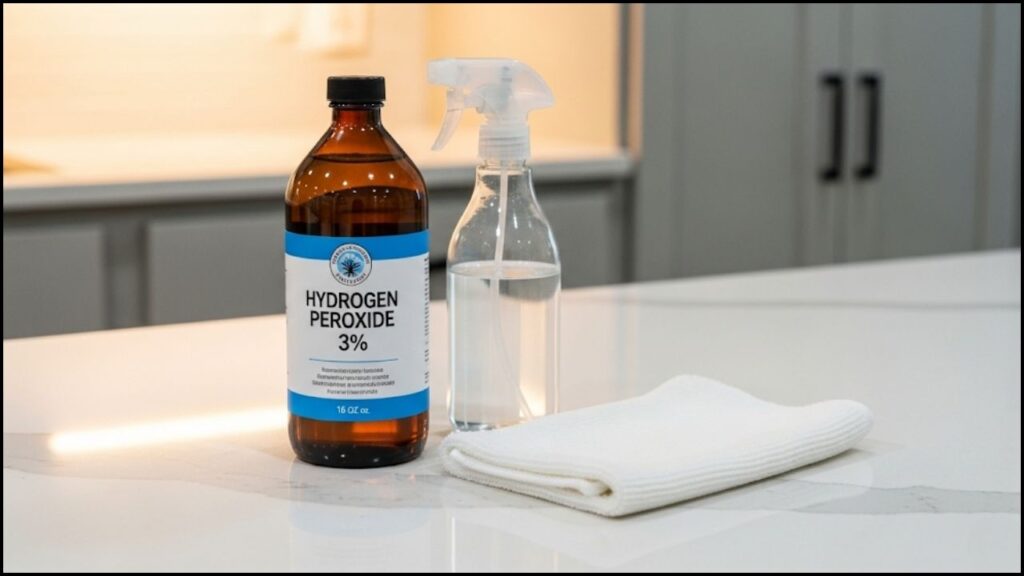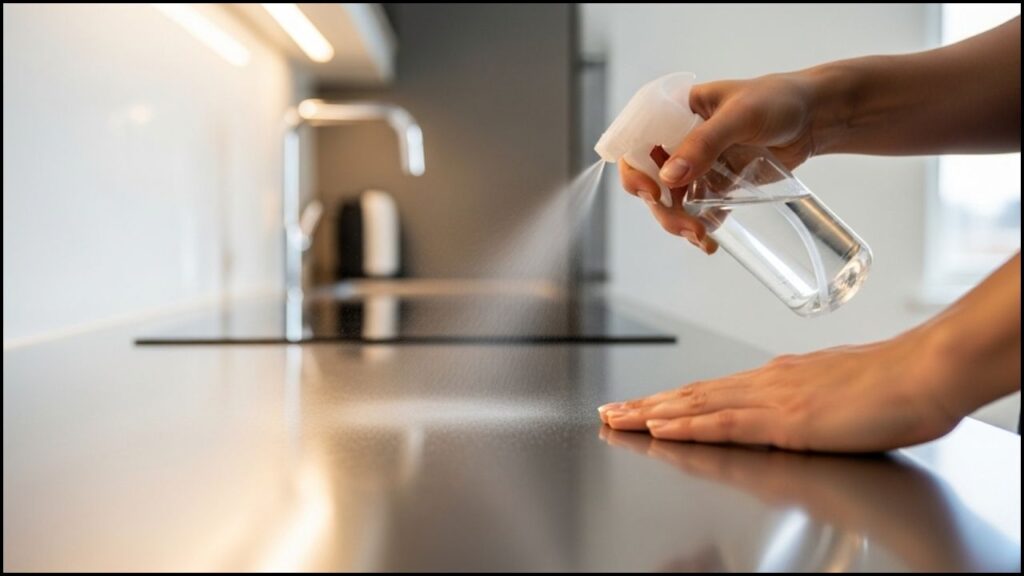The kitchen is often considered the heart of the home, but it can also be a significant hub for bacteria. As public awareness of hygiene continues to grow, many people are looking for effective, affordable, and readily available cleaning solutions. Among these, hydrogen peroxide has emerged as a powerful and versatile option for disinfecting and sanitizing various kitchen surfaces. Properly understanding how to clean your entire kitchen with hydrogen peroxide is crucial for ensuring safety and efficacy, according to health and sanitation experts.

Understanding Hydrogen Peroxide as a Cleaning Agent
Hydrogen peroxide (H2O2) is a chemical compound that, in its common household form, is a clear, odorless liquid often sold in a brown bottle. It is a powerful oxidizer, meaning it can break down the cell walls of microorganisms like bacteria, viruses, and fungi. This makes it a popular choice for disinfection. The most common concentration available for household use is 3%, which is considered safe and effective for many cleaning tasks.
According to Dr. Lisa Sanchez, a professor of environmental health sciences at the University of California, Berkeley, “Hydrogen peroxide is an excellent disinfectant because it targets a wide range of pathogens. Its effectiveness is particularly notable against many common foodborne bacteria like Salmonella and E. coli.” The Centers for Disease Control and Prevention (CDC) lists hydrogen peroxide as a disinfectant for use in healthcare settings and recommends it for a variety of surfaces. The CDC’s guidelines state that hydrogen peroxide is a viable option for disinfecting nonporous surfaces. While effective, hydrogen peroxide should not be confused with a one-size-fits-all cleaning solution. It works best on specific surfaces and when used with proper technique.
Safe and Effective Use on Kitchen Surfaces
The versatility of hydrogen peroxide allows it to be used on a number of kitchen surfaces, but proper application is critical to avoid damage and ensure disinfection.
Countertops and Food Preparation Areas
One of the primary uses for hydrogen peroxide in the kitchen is sanitizing countertops. Surfaces like granite, laminate, and stainless steel can be effectively cleaned with a 3% hydrogen peroxide solution. To use, it is recommended to first clean the surface with a detergent and water to remove any loose food particles or grease. After the surface is clean and dry, apply the hydrogen peroxide solution using a spray bottle.
Dr. Sanchez advises, “For disinfection, the surface must remain wet for a certain contact time. We typically recommend a minimum of 10 minutes to ensure the hydrogen peroxide has enough time to kill the pathogens.” After the contact time has passed, the surface can be wiped dry with a clean cloth. It is important to note that hydrogen peroxide can slightly bleach colored fabrics, so care should be taken with cloths and towels.
Kitchen Cabinets and Appliances

Kitchen cabinets, particularly those with a non-porous finish like lacquer or melamine, can also be cleaned with hydrogen peroxide. A light mist from a spray bottle can be applied and wiped away with a soft cloth. For delicate finishes, it is recommended to test a small, inconspicuous area first.
For appliance exteriors, such as refrigerator doors, dishwashers, and ovens, hydrogen peroxide can be used to remove fingerprints and smudges while disinfecting. Stainless steel surfaces, however, should be wiped down immediately after application to prevent streaks or a hazy residue.
Sinks and Drains
Kitchen sinks are a breeding ground for germs. To clean and sanitize a sink, especially after handling raw meat or produce, a simple method involves spraying the basin with hydrogen peroxide and letting it sit for several minutes before rinsing with hot water. For a clogged or slow-draining sink, a mixture of baking soda followed by hydrogen peroxide can create a fizzing reaction that helps to break down blockages.
Limitations and Precautions
Despite its benefits, hydrogen peroxide is not suitable for all surfaces and requires careful handling. It should be used with caution on porous materials such as unfinished wood or natural stone like marble, as it can cause discoloration or damage over time.
“Always check the manufacturer’s recommendations for cleaning and care of a surface,” says Emily Carter, a senior chemist at the Consumer Products Safety Commission (CPSC). “While 3% hydrogen peroxide is generally safe, it can be corrosive to some materials and can cause eye or skin irritation with prolonged contact.” The CPSC recommends wearing gloves and safety glasses when handling cleaning chemicals, including hydrogen peroxide.
Furthermore, hydrogen peroxide should never be mixed with other cleaning agents, particularly vinegar. While a mixture of vinegar and hydrogen peroxide is often mistakenly promoted as a powerful cleaner, this combination can create peracetic acid, a corrosive chemical that can be dangerous to skin and eyes and is not recommended for home use.
The Science Behind the Disinfectant
The power of hydrogen peroxide lies in its ability to decompose into water (H2O) and oxygen (O2), a process that releases reactive oxygen species. These species are highly effective at disrupting the structure of a wide range of microorganisms. The brown plastic bottles in which hydrogen peroxide is sold are designed to protect it from light, which can accelerate this decomposition process and reduce its potency over time.
For maximum effectiveness, the solution should be stored in a cool, dark place. The CDC notes that hydrogen peroxide is a highly stable and environmentally friendly disinfectant because its decomposition products are non-toxic. This makes it a more appealing option for some consumers compared to traditional chlorine-based bleach.
While hydrogen peroxide offers a safe and powerful solution for sanitizing many kitchen surfaces, its use requires an understanding of its chemical properties and limitations. Experts advise users to follow safety guidelines and to avoid mixing it with other cleaning agents to prevent a potentially hazardous reaction. The growing popularity of hydrogen peroxide underscores a shift toward more environmentally conscious and versatile cleaning practices for households globally.
Is Your Kitchen Always Hot? 10 Easy Fixes That Work, according to HVAC Pros
